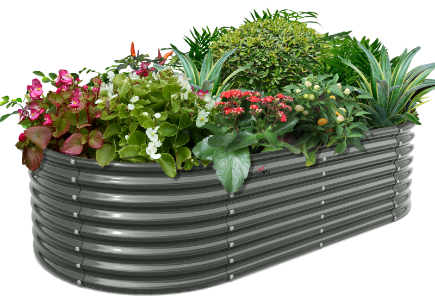The Benefits of Waist-High Gardening: How Elevated Beds Improve Accessibility and Plant Health
Body
Waist-high gardening, also known as elevated gardening, has gained popularity among gardening enthusiasts and novices alike. This innovative approach not only enhances accessibility but also promotes healthier plant growth. In this article, we will delve into the numerous benefits of waist-high gardening and how it can transform your gardening experience.

Improved Accessibility for All
One of the most significant advantages of waist-high gardening is its accessibility. Traditional gardening can be physically demanding, especially for individuals with mobility issues, back pain, or arthritis. Elevated garden beds allow gardeners to tend to their plants without excessive bending or kneeling. This design is particularly beneficial for:
- Senior gardeners
- Individuals with disabilities
- Those recovering from injuries
By providing a comfortable working height, waist-high gardening encourages more people to engage in gardening activities. Have you ever considered how much easier it would be to enjoy your garden without the strain of bending over?
Enhanced Plant Health
Another compelling reason to embrace waist-high gardening is the positive impact it has on plant health. Elevated beds often provide better drainage and soil aeration, which are crucial for healthy root development. Additionally, waist-high gardening can help mitigate issues such as:
- Soil compaction
- Pest infestations
- Weed growth
When plants are elevated, they are less susceptible to certain pests and diseases that thrive in traditional garden beds. Furthermore, gardeners can easily monitor their plants for signs of distress, ensuring timely intervention when necessary.
Ergonomic Benefits of Waist-High Gardening
Gardening should be an enjoyable and fulfilling activity. Waist-high gardening promotes ergonomic practices that reduce strain on the body. By eliminating the need to bend or kneel, gardeners can work for longer periods without discomfort. This is particularly important for:
- Maintaining physical health
- Encouraging regular gardening habits
- Reducing the risk of injury
Imagine being able to spend hours in your garden without the usual aches and pains. This is the promise of waist-high gardening.
Choosing the Right Elevated Garden Bed
When selecting a waist-high gardening bed, consider factors such as size, material, and design. For instance, the Garden Bed Kit is a popular choice among gardeners for its durability and ease of assembly. It features a sturdy frame that can withstand various weather conditions, ensuring your plants thrive year-round.
"Elevated garden beds not only make gardening accessible but also enhance the overall gardening experience." - Gardening Expert
Additionally, you might find it helpful to watch this informative video on waist-high gardening that showcases various designs and tips for success.
Conclusion
In conclusion, waist-high gardening offers a multitude of benefits that cater to a diverse audience. From improved accessibility and enhanced plant health to ergonomic advantages, this gardening method is a game-changer. Whether you are a seasoned gardener or just starting, consider incorporating waist-high gardening into your gardening practices. Your back will thank you, and your plants will thrive!







Comments